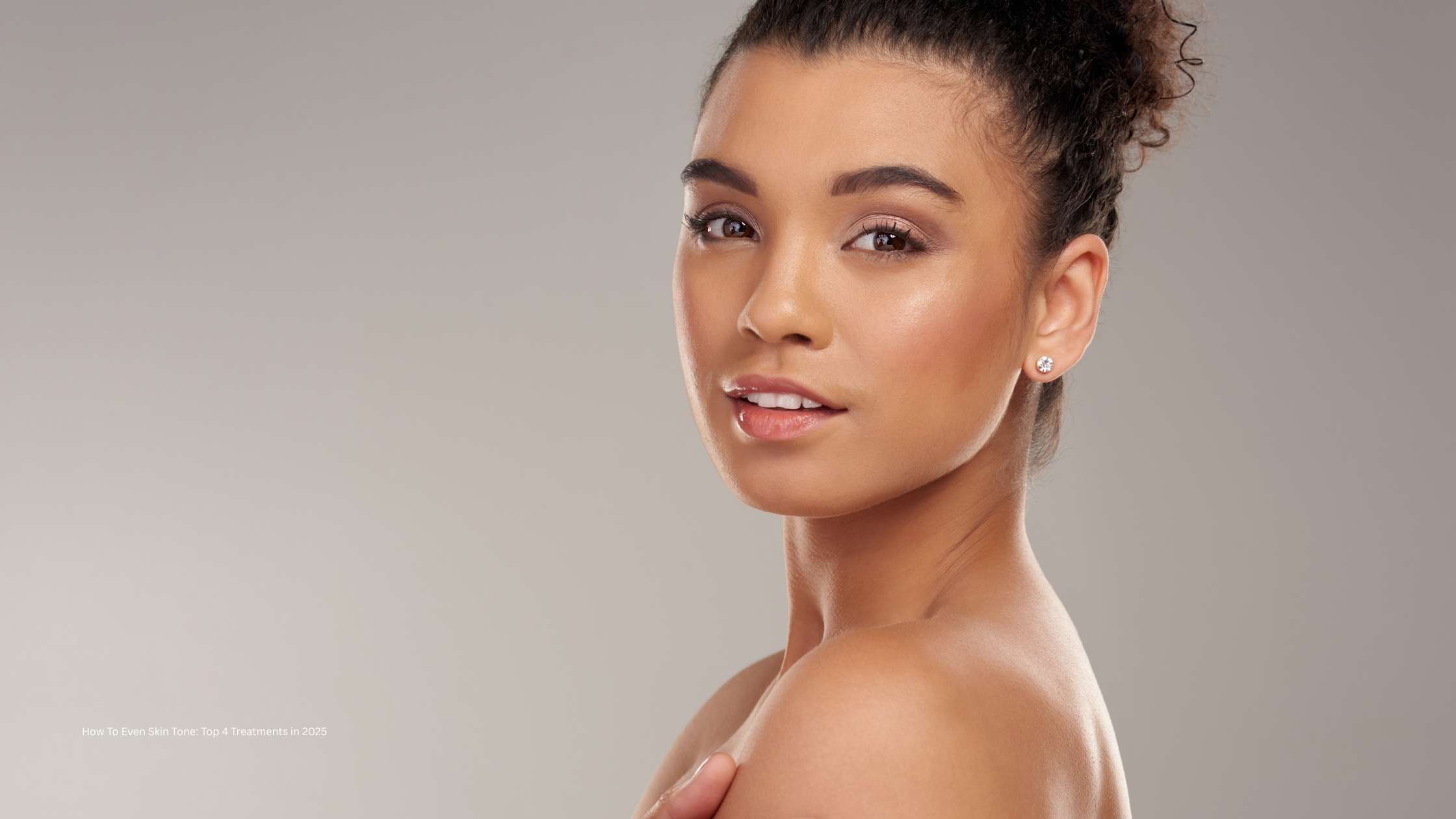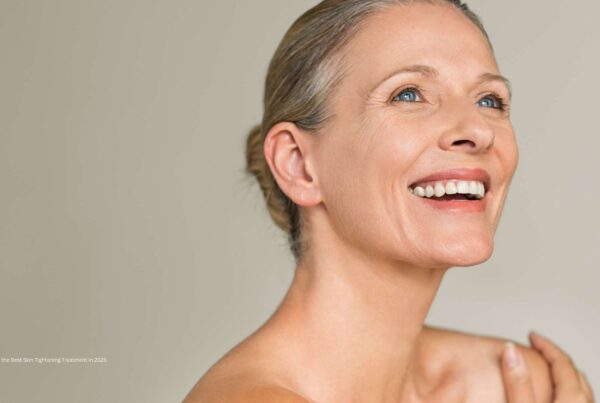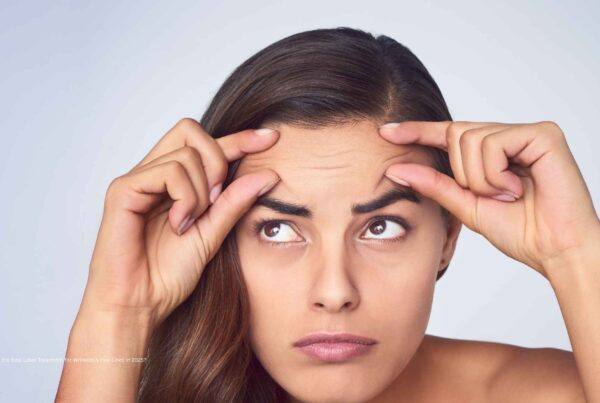How to even skin tone? It’s one of the most searched questions in skincare, and for good reason. If you’ve tried everything from home remedies to high-end skincare products, but your complexion still looks blotchy, dull, or patchy, you’re not alone.
Whether you’re dealing with melasma, rosacea, acne scars, or the after-effects of sun exposure and inflammatory hyperpigmentation, it can feel like nothing truly works. Especially if you have prone skin, dry skin, or a sensitive skin type.
In 2025, the most effective way to achieve an even complexion isn’t found in a bottle of moisturiser or a scrub for dead skin cells.
It’s in a customised treatment plan using medical-grade technology.
Aesthetic Treatments from a trained Cosmetic Clinic such as:
These go beyond surface-level fixes. These advanced treatments target melanin production, rebuild damaged collagen, fade blemish hyperpigmentation, smooth uneven skin texture, and restore a visibly more radiant complexion. No matter your skin type or concern.
And yet, the question remains: why is your skin uneven to begin with? Is it acne? Sun damage? Uneven pigmentation from hormonal changes or past breakouts?
If you’re unsure what’s really causing your dull skin, redness, or discolouration, or why your facial sunscreen and hyaluronic acid serum still aren’t helping, understanding the root cause is the key.
In this blog, we’ll walk you through the real reasons behind an uneven complexion, why some solutions fall short, and the top tips for choosing the treatment that actually works. So you can feel confident in your skin again and finally achieve that radiant skin glow.
Keep reading to find out what’s actually causing your uneven skin tone, and how to fix it for good.
What Is Uneven Skin Tone and Why Does It Happen?
Uneven skin tone happens when melanin isn’t distributed evenly. Leaving behind patches of discolouration, dark marks, or redness that just won’t fade.
But tone alone is rarely the whole story.
Your skin’s visible colour is only part of what’s going wrong. So what’s really happening beneath the surface to make your tone appear off? And how do we begin to correct it from the inside out?
Keep reading as we break down the science behind uneven skin, and the signs your skin’s natural processes may be out of balance.
The science behind uneven skin and skin tone changes
Uneven skin tone doesn’t appear overnight it builds quietly beneath the surface. What you’re seeing now is your skin reacting to deeper imbalances in melanin, inflammation, and renewal. Understanding the why behind the change is the first step to choosing a treatment that will actually work.
-
- Melanin misfiring: Your pigment cells don’t just respond to sunlight heat, hormones, and stress can all disrupt melanin production, causing blotches and patches in all the wrong places.
- Lingering inflammation: Redness from acne, rosacea, or irritation may fade on the surface, but beneath, inflammatory signals keep triggering discolouration known as post-inflammatory hyperpigmentation.
- Sluggish skin turnover: As we age or experience dry skin or stress, dead skin cells hang around longer than they should, dulling your complexion and exaggerating dark patches.
- Fragile blood vessels: When tiny capillaries weaken or dilate, they create uneven redness and blotchiness — especially noticeable in fair or sensitive skin types.
- Hormonal shifts: Changes in oestrogen or progesterone from pregnancy, contraception, or even stress — can increase melanin production and lead to conditions like melasma.
What’s happening beneath your skin isn’t random. It’s a pattern. And once you understand the pattern, you can finally break it. Next, let’s explore the real-world causes that trigger these internal imbalances, starting with sun spots, hyperpigmentation, and hormonal shifts.
Common causes: sun spots, hyperpigmentation, and hormonal shifts
These three culprits are the most common drivers of discolouration, especially in adult women. Each leaves its fingerprint on your skin differently.
-
- Sun spots (solar lentigines): These flat, brown patches usually appear on the face, chest, and hands — areas with the most cumulative sun exposure. UV rays accelerate melanin production, leading to long-term pigment clusters even if you wear sunscreen now.
- Hyperpigmentation from past blemishes: Whether it’s an old pimple, rash, or scratch, blemish hyperpigmentation is your skin’s overreaction to injury. Even once healed, excess pigment lingers, especially in deeper skin tones. This is post-inflammatory hyperpigmentation — and it’s notoriously slow to fade.
- Hormonal shifts (e.g. melasma): Estrogen, progesterone, and cortisol affect melanin production in complex ways. That’s why melasma often appears during pregnancy or with contraceptive use. It typically forms as symmetrical patches on the cheeks, forehead, or upper lip — and doesn’t respond well to over-the-counter products.
How skin texture and tone become more visible with age
These causes don’t just colour the skin — they can subtly reshape how light reflects off your face, making dullness, uneven tone, and shadows more visible.
So if these issues are already showing up, what’s the most effective way to treat them in 2025? Let’s explore the best treatments available right now to even out skin tone — safely, precisely, and without the guesswork.
What are the Best Treatments to Even Skin Tone
By now, you’ve likely realised this isn’t something a new serum alone can fix. When pigmentation becomes stubborn, blotchiness feels permanent, or your skin just looks uneven no matter how much you exfoliate — it’s time to look deeper.
The good news? In 2025, we’re no longer limited to harsh peels or guesswork. Today’s top aesthetic treatments are precise, customisable, and designed to restore your skin’s natural radiance without damaging your barrier. Whether your concern is discolouration from the sun, lingering marks from inflammation, or hormonally driven pigmentation, there’s a tailored solution that targets the root cause — not just the symptom.
But not all treatments are created equal. So which one is right for your skin, your lifestyle, and the result you want to see in the mirror?
Let’s begin with a standout option for restoring brightness and fading sun damage: BBL HERO — a favourite for targeting sun spots and reigniting natural radiance.
BBL HERO for sun spots and radiance
If your uneven skin tone is most visible in natural light — especially as sun spots, blotchiness or general dullness — BBL HERO is your first-line solution. This advanced light-based treatment works by delivering quick pulses of broadband light deep into the skin, breaking up uneven pigmentation while also calming redness and boosting collagen.
What makes it the standout in 2025? BBL HERO can treat large areas quickly with zero downtime and visible improvements after just one session. It’s ideal for early pigmentation, sun damage, and rosacea-prone skin, especially when you’re after a more radiant complexion without dramatic peeling or resurfacing.
But what if your uneven tone isn’t just about pigmentation — what if there’s also roughness, scarring, or uneven skin texture that makeup can’t hide?
Let’s look at how HALO and ProFractional go deeper to target both pigmentation and texture — with precision.
HALO and ProFractional: Targeting texture and pigmentation with precision
When uneven skin tone is more than surface-level — when it’s tied to past acne scars, rough patches, or deeper hyperpigmentation — you need more than light therapy. That’s where HALO and ProFractional step in. These best laser treatments work below the surface to remove damaged skin cells, stimulate collagen, and refine the skin’s texture and tone all at once.
HALO is a hybrid fractional laser, combining two wavelengths to target both deep and superficial concerns in a single session. ProFractional goes deeper still, ideal for etched-in pigmentation, pitted scars, or visible uneven skin texture from inflammation or ageing.
Together, they offer a precision approach — resurfacing only the skin that needs it while leaving the rest untouched for faster healing.
But what if your skin is too sensitive for resurfacing? What if you’re early in your journey, and want a gentler way to restore balance?
👉 That’s where Clear + Brilliant becomes your perfect starting point.
Why Clear + Brilliant is a top pick for sensitive skin
If your skin is prone to redness, flares easily, or simply hasn’t responded well to stronger treatments, Clear + Brilliant offers a gentle but effective alternative. It’s designed to refresh the skin’s surface, boost radiance, and gradually reduce mild pigmentation — all without significant downtime or disruption.
Perfect for early-stage uneven tone or ongoing maintenance, it’s often described as the “entry point” into professional skin correction.
But what if you need something more intensive — a solution for years of sun damage, melasma, or deeply set discolouration?
That’s where Sciton Contour TRL goes further — deeply resurfacing uneven tone with transformative results.
How Sciton Contour TRL deeply resurfaces tone irregularities
When pigmentation runs deep — from years of sun damage, hormonal shifts, or melasma that won’t budge — Sciton Contour TRL offers a powerful solution. This ablative laser removes damaged layers of skin with extreme precision, triggering full resurfacing and revealing dramatically more even tone beneath.
It’s ideal for those who want transformative results and are ready for a slightly longer recovery in exchange for lasting clarity and smoothness.
But uneven skin tone isn’t limited to the face — so what works when the problem shows up on the chest, arms, or hands too?
Let’s explore how to safely even skin tone across both the body and face.
Evening Out Skin Tone on the Body vs Face
While professional treatments like BBL HERO and HALO are game-changers for the face, uneven tone doesn’t stop at the jawline. If you’ve ever noticed sun spots on your chest, patchy pigmentation on your arms, or dullness across your legs, you’re not alone — the body is just as prone to tone irregularities, and often more neglected in our routines.
But here’s the key: the skin on your body isn’t the same as the skin on your face. It’s thicker, slower to respond, and exposed to different stressors. That means the approach to evening it out needs to be tailored — and often much simpler.
So how do you treat uneven pigmentation on the body without overcomplicating your routine — or wasting money on products that don’t absorb or deliver results?
Let’s explore the most effective body-focused strategies and the skincare ingredients that actually help — without making things worse.
Skin Care Tips to Even Tone at Home Without Disrupting Your Barrier
Even once you’ve treated uneven skin tone professionally, your at-home routine can either support your results — or slowly unravel them. Many people unknowingly sabotage their progress with harsh exfoliants, too many active ingredients, or layering products that were never meant to work together. The goal of home care isn’t to replace laser treatments — it’s to maintain results, protect your skin barrier, and help prevent new pigmentation from forming. So what actually works? Let’s break down the best creams, exfoliants, serums and sunscreen strategies — plus simple tips that support your skin without setting it back.
Moisturiser, Lotion, or Cream? Why Your Routine Might Be Making Dark Spots Worse
When it comes to correcting tone, more isn’t always better. Many people layer moisturisers, lotions, and brightening creams without realising the combination could be triggering inflammation, especially on sensitive or reactive skin types. The wrong product can actually worsen dark spots — or even contribute to barrier breakdown. Start by simplifying. Choose one moisturiser that supports hydration, not just whitening. And always patch test new formulas. Barrier repair is the foundation of true skin correction.
Exfoliation and Glycolic Acid: Top Tips for Smoother, More Even Skin
Gentle exfoliation is essential for removing dead skin cells that dull the surface — but overdoing it can increase irritation, especially in skin prone to hyperpigmentation. Glycolic acid is one of the most effective chemical exfoliants for uneven tone, but it must be used wisely. Aim for low percentages, a few times a week, and follow with a rich moisturiser. Exfoliation should feel like renewal, not punishment.
Niacinamide, Serum, and Sunscreen: The Brightening Trio for Dark Spot Control
If you’re looking for a non-invasive way to fade dark spots and support tone correction, this trio is your best friend. Niacinamide calms inflammation and fades pigment. A brightening serum with vitamin C or licorice extract supports even tone. And daily sunscreen — even on cloudy days — is non-negotiable. Not just for ageing prevention, but to reduce your risk of skin cancer while protecting progress.
Can You Use Face Creams on the Body? Lotion Tips for Arms, Chest and More
Sun exposure affects more than just your face. Discolouration often appears on the chest, shoulders, or arms — especially if you’ve skipped sunscreen. While some face creams and serums can be used on these areas, they’re often too concentrated or costly for larger surface areas. Instead, reach for a body-specific lotion with gentle exfoliating acids or niacinamide. Consistent application, SPF, and patience will help fade body pigmentation over time — and help you feel more confident, head to toe.
Choosing the Best Treatment to Even Skin Tone in 2025
When you first started searching for how to even skin tone, it probably wasn’t just about wanting brighter skin.
It was about understanding why your complexion had become uneven — and finally finding a treatment that felt right for your skin, your goals, and your personal skin journey.
Through this guide, we’ve helped you answer that question. You now know that the leading skin treatments for evening skin tone in 2025 are:
-
- BBL HERO – take a look at a similar blog post on BBL Hero Facial Treatments.
- HALO Laser – see a recent post on the combination effects of HALO and BBL.
- Clear + Brilliant – learn more on Clear + Brilliant anti-ageing benefits
- Contour TRL
- ProFractional Laser
You’ve also seen how tone concerns affect more than just the face — and how the right skincare, habits, and product choices can help you maintain and protect your results for the long term.
At Eleventh Heaven, we’re here to guide you through that next step.
If you’re ready to even your skin tone with a personalised, proven treatment plan — we’d love to help you feel more confident in your skin again.
Book your consultation today — and let’s bring back the skin you feel most at home in.
References:
https://www.webmd.com/skin-problems-and-treatments/ss/slideshow-causes-of-skin-discoloration




